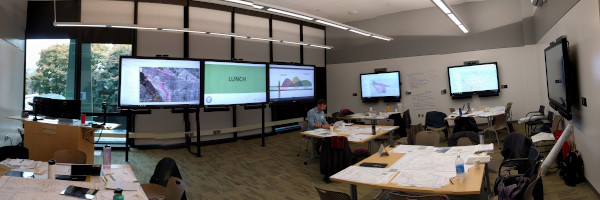Data
| Data | |
|---|---|

| |
| Sectors | Data |
| Contact | Scott Tousley |
| Topics | |
- Authors
Municipalities are using data and analytics to inform decision-making in a wide range of areas, from transportation planning to emergency management.
How do you deliver essential services to your citizens in the face of already stressed aging infrastructure, shrinking budgets and a myriad of challenges that create complexity never envisioned by any civil engineer prior to the 21st century based on this mass influx of people? The pace of change is daunting and cities who do not act to address this seismic migration surge will likely face dire consequences.
The smart city concept, based on internet of things (IoT) technologies wirelessly connecting infrastructure using sensors, beacons and other devices that produces substantial amounts of data, was developed to help cities gain better manage their assets. The concept of building a “smart city” can be traced back to various movements and research papers published in the late 20th century. One of the most notable early research pieces from the Los Angeles Community Analysis Bureau, “The State of the City: A Cluster Analysis of Los Angeles (1974)”, “sought new tools to address the old challenges of deteriorating housing by providing detailed local data to identify neighborhoods showing early signs of obsolescence.” Data was identified as one of the keys to gaining a better understanding to an urbanization problem, and that axiom holds true more than ever in 2017.
Modern daily life and the problems associated with it, defined by data, allows deeper insight and decision-making capabilities that both city officials need, and the innovation community requires, to create better solutions to deal with the urban challenges of densification. Quality data is essential, however, making the data accessible and understandable is critical to making the data ultimately valuable.
How do cities deal with the enormous amounts of data that smart cities produce? Once collected, how do city officials interface with this data to extract the right information to make effective operational and strategic decisions? How are these decisions made in a time efficient manner without sacrificing insight, relevance or the ability to synthesize multiple disparate data sources to make a single yet complex decision based on multiple real-time inputs?
Data, analytics, and AI are being used in a variety of ways to improve municipalities, including:
- Smart city management: municipalities are using data and analytics to optimize city operations, improve traffic flow, and reduce energy consumption. For example, using data from traffic cameras and sensors, municipalities can analyze traffic patterns and adjust traffic signal timings to reduce congestion.
- Predictive maintenance: municipalities are using data and analytics to predict when equipment such as streetlights and water pumps will need maintenance, so they can schedule repairs before they fail.
- Crime prediction: municipalities are using data and analytics to predict where and when crimes are likely to occur, so they can deploy police resources more effectively.
- Infrastructure planning: municipalities are using data and analytics to plan for the future, for example by analyzing population growth and land use patterns to determine where new roads and buildings should be built.
- Environmental monitoring: municipalities are using data and analytics to monitor air and water quality, so they can take action to improve the environment.
- Public service delivery: municipalities are using data and analytics to better understand the needs of their citizens and deliver more effective public services, such as healthcare, education and social services.
- AI-powered chatbots and virtual assistants: municipalities are using AI-powered chatbots and virtual assistants to improve customer service and help citizens access information and services more easily.
- Predictive modeling: municipalities are using AI-powered Predictive Modeling to predict future events, such as natural disasters and civil disturbances, so that they can respond more quickly and effectively.
- Better citizen engagement: Cities are using data to improve citizen engagement and transparency. For example, cities are using open data portals to make data about city services and operations more accessible to the public.
- Better crisis management: Cities are using data to respond more quickly and effectively to crises such as natural disasters and civil disturbances. For example, cities are using data from social media and other sources to track the spread of misinformation and disinformation, and then take action to counter it.
- Increased efficiency: Cities are using data to improve the efficiency of city services such as waste management, energy management and public safety.
- Better public services: Cities are using data to better understand the needs of citizens and deliver more effective public services. For example, cities are using data from social media and other sources to identify areas where residents are experiencing problems such as homelessness, and then direct resources to those areas.
- Improved sustainability: Cities are using data to reduce their environmental impact and promote sustainability. For example, cities are using data from sensors and smart meters to optimize energy consumption, and monitor air and water quality.


